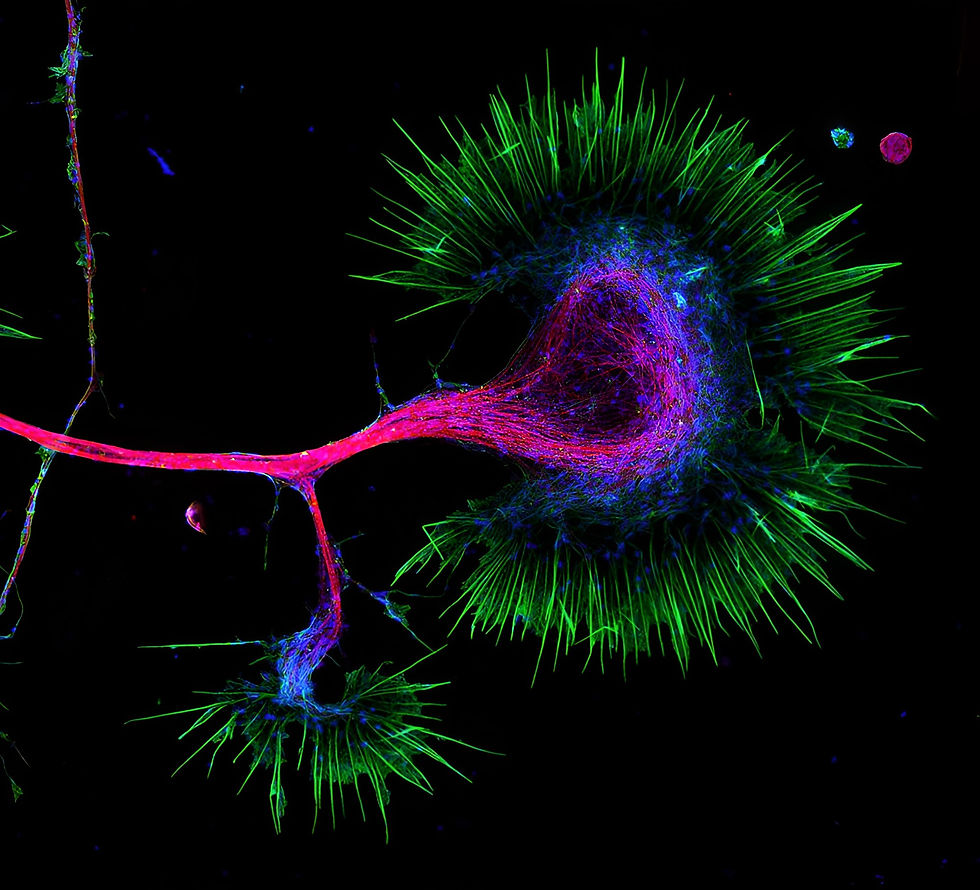Cell Biology
- gpq3gb06x64j
- Aug 24, 2022
- 1 min read
Count on our advanced functionalities
Cell biology comprises numerous disciplines such as organelle biology, cell division, cytoskeleton, genome biology, differentiation, cellular dynamics, and transport.
Research in modern cell biology is frequently based on living and fixed cultured cells using a variety of research approaches and tools, where light microscopy is one of the most important for this discipline.
Because the size of organelles and other intracellular structures is often below the resolution limit of conventional light microscopy, super-resolution techniques such as STED and MINFLUX are now frequently used for research in cell biology.
Abberior offers several unique microscope features which facilitate imaging of fixed and living cell samples over extended time periods at the highest possible resolution:
MINFLUX imaging mode for resolutions down to 2 nm
MINFLUX single particle tracking with up to 10 kHz, i.e., 1 data point every 100 µs
Adaptive Illumination for super-resolution STED imaging at minimal light dosages
Lifetime imaging and advanced time-gating
Pulsed high-power STED lasers for best resolutions with 2D and 3D super-resolution nanoscopy
Detectors with superior detection efficiency (up to 65%)
Year | Journal | Author | Title |
2006 | Nature | Katrin I Willig et al. | |
2009 | Nature Methods | Stefan W Hell et al. | |
2011 | Biophysical Journal | Jan Tonnesen et al. | |
2012 | Journal of Molecular and Cellular Cardiology | S. Mitchell-Jordan et al. | |
2012 | ChemPhysChem | Tobias Muller et al. | |
2015 | Methods Mol Biol. | Natalia H. Revelo and Silvio O. Rizzoli | |
2017 | International Journal of Molecular Sciences | Rafal Szatanek et al. | |
2019 | Journal of Physics D: Applied Physics. | Georgij Kostiuk et al. | |
2022 | Nature | Vladimir Riazanskil et al. |



Comentarios